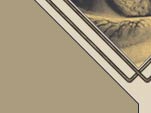 |
 |
| Home |
| About Homeopathy |
| Homeopathic Training |
| Iris diagnosis |
| Acupuncture |
| Faq |
| Office Location |
| Products - Dermal |
| Contact |

What is Homeopathy ?This is a medical science where the principle of "like cures like" is followed. The remedies are available in highly diluted form to prevent side effects. In allopathic (western medicine, containing milligrams of the active ingredient) a symptom to be treated is identified and stopped or relieved. In homeopathy the full characteristic and symptom picture of the patient is taken into account. (on levels of physical, emotional and mental spheres) The patient's constitution is determined on mental, emotional and physical levels and the complete person is treated. In classical homeopathy a constitutional remedy (i.e. a single remedy) is used. In clinical homeopathy over the counter complex remedies (containing a number of remedies) are used for symptomatic treatment. Homeopathic remedies can be used to prevent illness, improve immunity and to speed healing and absorption of nutrients. A simple example of the action of homeopathy is:
If a substance can cause a symptom in a healthy person it can treat that symptom in an ill person if the remedy is prepared homeopathically from the substance. Important facts about homeopathyIt is important to understand that homeopathic remedies are medicines in highly diluted format. The medicines are derived from:
The dilution is done to establish a medicine presentation that is gentle in action. The body is therefore gently coerced toward permanent healing. Children and babies, even animals are treated with great success with homeopathic medicine. Acute or recently occurring illnesses e.g. influenza, sore throats, coughing, are also treated very successfully. Diagnostic techniques used in homeopathy
|

|
Copyright 2000 - 2007. Website design by RisC Com |